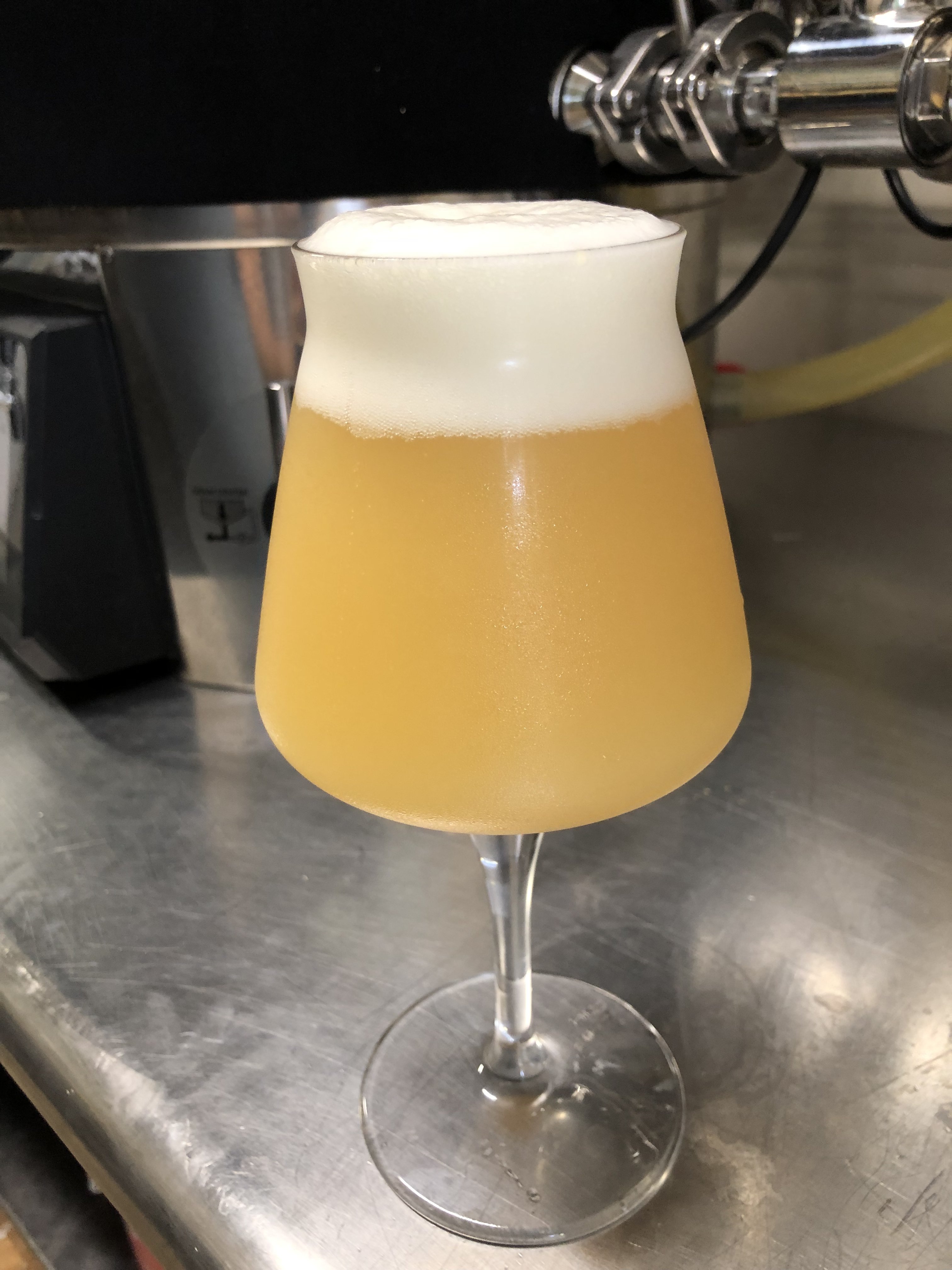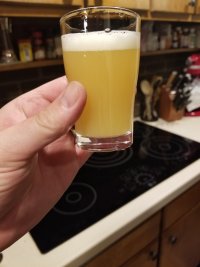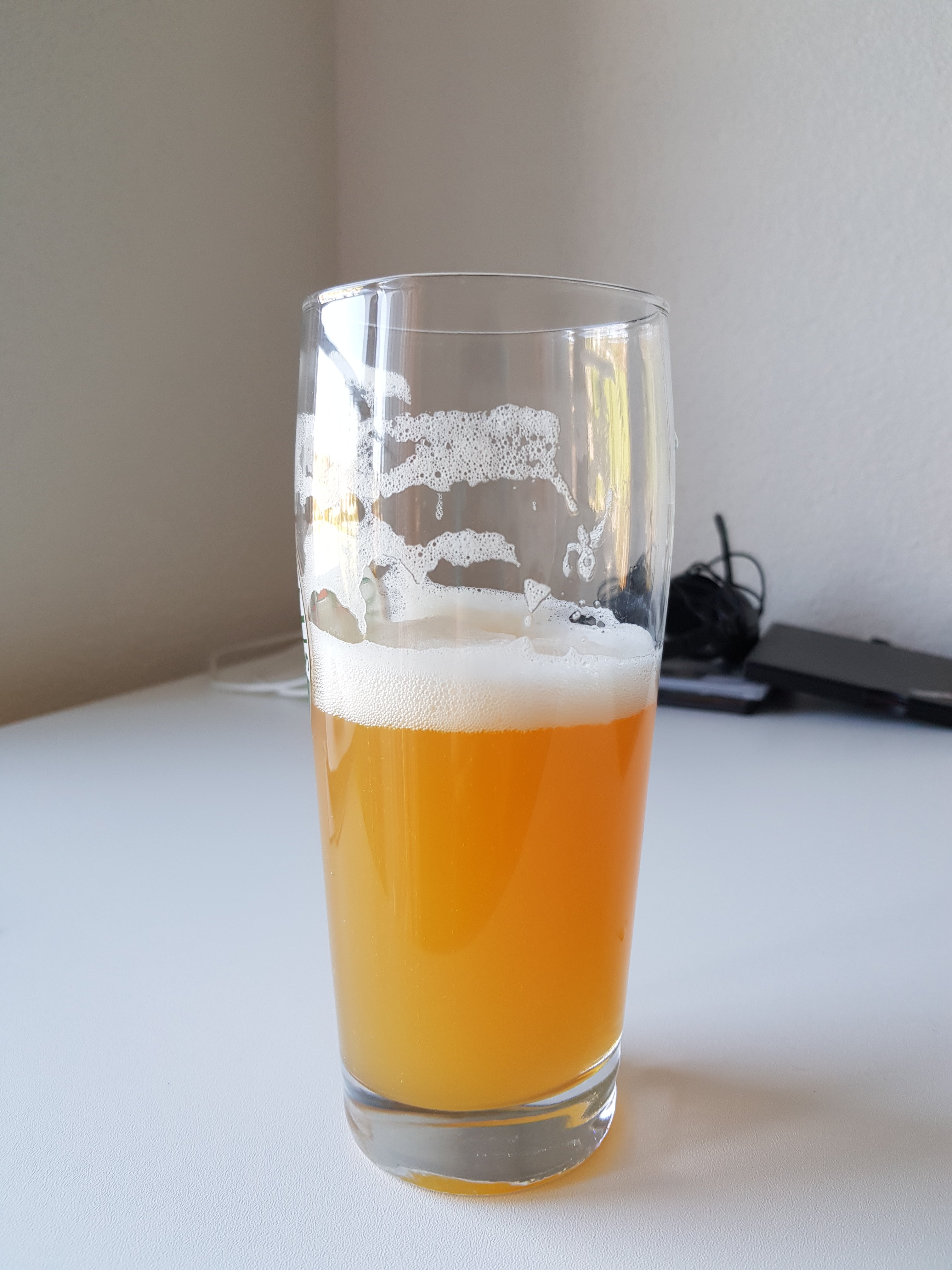While I consistently make phenomenal tasting NEIPA (aroma and flavor are excellent), I continue to miss the color I'm aiming for. I know cameras/pictures are subjective with how they translate online, but it seems the majority of examples I see here have that amazing pale yellow hue I've been trying to achieve.
No matter how I tweak my recipes to lower the SRM, it seems I always have a bit more orange hue than I wanted. It's a great/vibrant orange (zero oxidation), but nevertheless not the color I wanted.
What's the most likely variable that could be adding unintended color to my NEIPA's?
Some things I've been considering:
- I run a single vessel, brew in a basket system — I do get a small amount of grain through my basket and eventually into the boil kettle. Could boiling this small amount of grain be the culprit?
- I run a steam condenser, with a 5500watt element @ 40% power and the boil is still ridiculously vigorous (1.1 gal/hr evap). I haven't played with this, but could it be possible I'm boiling too hard? I could back this off a bit if needed.
- Anything else I'm not considering
And if it helps, my typical recipe is in the ballpark of 60% 2-row/pilsner, 30% flaked oats/wheat, 10% carapils - depending on the base malt, I'm typically somewhere between 3.8 - 5 for the SRM, but again, to my perception they're coming out a bit darker.
Thanks for any input!











![Craft A Brew - Safale S-04 Dry Yeast - Fermentis - English Ale Dry Yeast - For English and American Ales and Hard Apple Ciders - Ingredients for Home Brewing - Beer Making Supplies - [1 Pack]](https://m.media-amazon.com/images/I/41fVGNh6JfL._SL500_.jpg)




















































